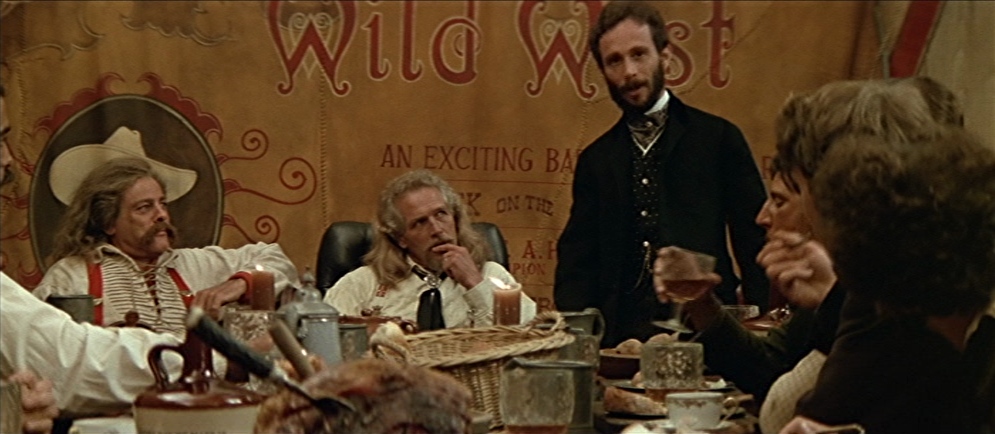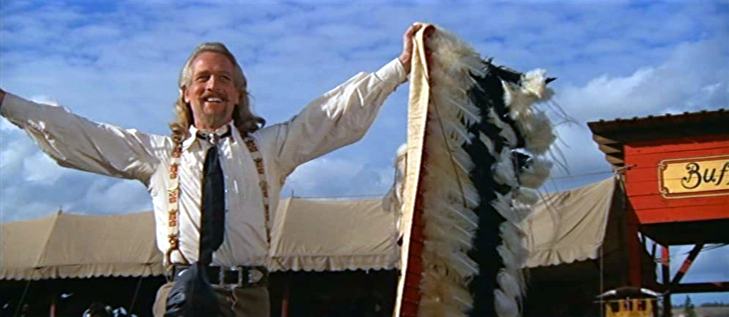Of all the directors who came to the fore when the Hollywood studio system was breaking down in the 60s and 70s – they included, among others, the likes of John Cassavetes, Shirley Clarke, Francis Coppola, Clint Eastwood, Terrence Malick, Arthur Penn, Bob Rafelson, Martin Scorsese and Steven Spielberg – my favourite has always been Robert Altman. I first encountered his work as a student in 1974 at a film society screening of The Long Goodbye; notwithstanding the difficulty of keeping 16mm prints of ’Scope films in focus, I left exhilarated by the invention, intelligence, wit, honesty and sheer originality I had just seen and heard. It was the start of a long cinematic love affair that developed further with Nashville – caught during its first run the afternoon before I embarked on exams (the movie was more enjoyable than revision!) – and continued through Altman’s final film, the wise and wonderful A Prairie Home Companion, to this day. I can’t imagine I’ll ever fall out of love with his work.
Not that Altman’s output wasn’t uneven. (Isn’t that true of most artists?) But he made more great movies than most, and the notion that the golden years seldom last more than a decade simply didn’t apply to him. His first out-and-out stunner was probably McCabe & Mrs Miller, made in 1971, while his last three gems – Gosford Park, The Company and Prairie… – were all made in the first decade of this century. In the meantime he directed at least a dozen other movies – not to mention some extraordinary work for television – which I would designate as ‘great’. I won’t list them all here, but as examples of his range and highly distinctive creativity, I recommend Thieves Like Us, 3 Women, Popeye, Secret Honor, The Player, Short Cuts and the two Tanner series.
So what do I love about Altman’s movies? Most of them feel unusually fresh, a consequence of his profoundly imaginative disregard for Hollywood conventions and genres. But there was also his suspicion of, even antipathy towards, authority and power, linked to an unsentimental compassion for loners, losers, outcasts and the oppressed. His fascination – part affectionate, part despairing – with the stories America told about itself, not least through the movies. His expertise with actors, and the gloriously idiosyncratic look and sound of his films, much imitated but seldom matched. And, as mentioned earlier, I loved his movies’ wit, intelligence and honesty. They felt as if they came from the heart. For better or worse (and it was most often the former), an Altman film was always first and foremost an Altman film.

Which brings me to the reason I’m writing this piece. Because Altman was both prolific and uneven, quite a few of his films, many of them very fine indeed, are nowhere near as well known as they deserve to be. One such is Buffalo Bill and the Indians or, Sitting Bull’s History Lesson, just out on BluRay. Originally released in 1976 following the deservedly acclaimed masterpiece that was Nashville, it saw Paul Newman cannily cast as scout-and-sharpshooter-turned-star William ‘Buffalo Bill’ Cody. It was and remains a gem, though at the time of its release it wasn’t widely recognised as such. Perhaps it just struck truck some as a lesser achievement than the groundbreaking Nashville; perhaps those who believed Altman was systematically making ‘revisionist’ genre films felt that the remarkable McCabe & Mrs Miller had been a more successful foray into ‘Western’ territory. But such a belief would have been based on a misunderstanding of Altman’s intentions and preoccupations. He wasn’t really interested in movie genres per se, and would often ignore genre entirely. (As soon as he was offered creative freedom after the success of M*A*S*H, he went and confounded the studio financing his follow-up by making the bizarre but beguilingly unclassifiable Brewster McCloud). When he did deploy genre it was in order to explore how the historical and/or contemporary realities of American life related to the narratives Americans told about and to themselves through film, theatre, music, radio, television, literature, journalism, political campaigns or whatever.
If we are to go down the generic route, Buffalo Bill is less a ‘revisionist Western’ than a politically astute satirical comedy-drama about ‘putting on a show’. Cody may have attained fame as a hero of the Wild West, but Altman’s film explores how that ‘heroism’ was a carefully constructed legend. It’s set in the mid-1880s, by which time Cody was the revered star of a travelling Wild West Show. He’s no longer a great scout and tracker (if indeed he ever had been), but the boss and lead act in a circus-like spectacle which re-enacts – or, rather, rewrites – key moments from recent American history. The latest plan Cody and his producer Nate Salsbury (Joel Grey) have come up with to increase audiences and profits is to have the now captive Sitting Bull (Frank Kaquitts) play himself in a pageant which purports to depict – and actually reverses the outcome of – Custer’s fateful encounter with the Sioux chief at Little Big Horn. So far, so show-business; but Sitting Bull is a wily sort and has dreams, demands and principles of his own.

To divulge more of the storyline would be to diminish enjoyment for anyone unfamiliar with the film. But it’s useful to know that most of the characters in the film – played by a lovely cast that also includes Burt Lancaster, Harvey Keitel, Shelly Duvall and Kevin McCarthy– actually existed and were somehow connected with Cody’s show. I should also add that, despite the credits’ suggestion that the film was inspired by or adapted from Arthur Kopit’s play ‘Indians’, it bears little or no resemblance to Kopit’s work; more importantly it never feels in anyway theatrical or stagey – except, of course, in the scenes showing the Wild West Show’s tableaux-like presentations of white America’s victories over the Native Americans.
For Altman and his co-writer Alan Rudolph, Buffalo Bill… was a film about the beginnings of ‘the show business’ (as Nate Salsbury keeps calling it) and how those beginnings reflected the values, aspirations and anxieties of the time, be they those of white Americans like Cody and his entourage, of native Americans like Sitting Bull, or of others, such as Halsey, the chief’s mixed-race translator played by Will Sampson (of One Flew Over the Cuckoo’s Nest fame). It’s telling that Bill and his team (many of whom are sycophantic hangers-on, knowing their incomes depend on fuelling the Cody myths) mistakenly assume, when Sitting Bull and his tribe first arrive at the Show, that the chief is the physically prepossessing Halsey rather than the older, relatively diminutive man riding next to him; for Bill and his company – with the notable exception of Annie Oakley (Geraldine Chaplin), a friend of the chief – appearance and reputation are everything. (When President Grover Cleveland visits later, admiring comments are soon made about his size.) But Bill is worst by far; having come to believe the lies he and others have concocted about his heroic past, he can no longer properly discern between reality and fiction. Vain and deluded, he obsesses over whether his hair has grown as long as Custer’s, panics in a crisis that he can’t find his ‘real jacket’, and claims, ‘Anything historical is mine.’

Made for America’s bicentennial year, Buffalo Bill… deals with many of the same themes as Nashville: the obsession with celebrity, success and money; notions of national identity, destiny and history; the way those notions are turned into entertainment; racial prejudice and inequality; the distortion of reality through simplistic slogans and jargon. (Salsbury’s artistic pretentions have him babbling about ‘genuity’, ‘dispropriateness’ and Bill’s being ‘the most futurable actor’.) Maybe its scepticism about the American Dream didn’t fit with the national mood in the bicentennial year, but what was funny, touching, inventive and relevant then remains just as funny, touching, inventive and worryingly relevant now after four years of Trump. Indicator’s re-release of the film – now beautifully remastered and restored to make the most of Paul Lohmann’s marvellous camerawork – on BluRay feels timely indeed.
Buffalo Bill and the Indians or, Sitting Bull’s History Lesson is released on BluRay by Indicator; further details available at https://www.powerhousefilms.co.uk

